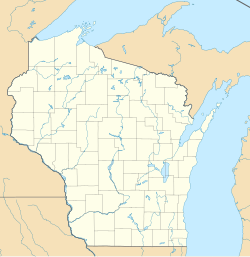Sauk City High School | |
 | |
| Location | 713 Madison St. Sauk City, Wisconsin |
|---|---|
| Coordinates | 43°16′22″N89°43′33″W / 43.272778°N 89.725833°W |
| Built | 1916 |
| NRHP reference No. | 89000071 [1] |
| Added to NRHP | 1989-02-23 |
Sauk City High School is a historic former school established in Sauk City in 1877. A building was constructed for it in 1891. [2] Alfred Clas designed a building for the high school in 1916. [3]
State legislator and education advocate C. C. Kuntz "lived at the school". German was "always" taught at the school. [2] The high school was added to the National Register of Historic Places in 1989. It is at 713 Madison Street. [4]


